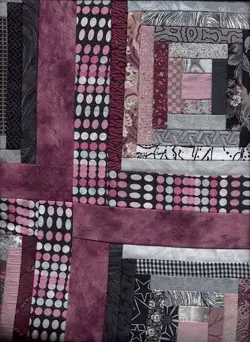If you are buying a new machine and you haven't had one for 40 years, here's what you might look for:
(1) needle down
(2) low to high speed lever
(3) includes instruction manual
(4) has mounting table to support work
(5) has plastic cover for when machine is not in use
(6) has free-motion quilting or darning foot
(7) has 80-700 stitches, some for utility sewing, some for embroidering edges of tea towels, etc. Companies that provide the maximum amount are there for the person who is not satisfied with mediocre stitches
(8) top speed minimum of 800 - 1200 spms on home sewing machine, unless you are purchasing a quilt head machine in which you want a top speed of 2500-5000 spms, and you better know what you're doing, too. spm = stitches per minute
(9) if you have ever been described by your best friend as having an artistic bent, get a machine with software or from the machine screen will allow you to create your own stitches. If so, throw away the damn book and create stitches that will knock your friends' socks off. Keep a good record of the stitches backed up on a disc, in case you want to write a disc to sell to other people when people start noticing your work looks like nobody else's.

(10) Get the best machine you can afford. Take the lessons offered with the machine or pay for lessons by whoever is teaching machine or software use. There are a few people who made videos and sell them apart from the machine, but they're not useful to you unless you have their specific daily-use machine, and I'm not just whistling Dixie, either. Machines have unique languages, and once you learn one, that becomes your birthright practically. Your lessons will expire after 1 year along with your electronics warantee unless you have the exceptional dealer. For 23 years I watched people blaming their machine for difficulties caused by their ignorance. Don't be one of them. Take the course offered by the dealer, and be sure the entire book is covered so you'll know how to do things you didn't think you'd be using your machine for, but suddenly, someone wants you to fix a buttonhole, and you don't know whether your machine has a buttonholer, if its built in or if you have to go purchase a 10-pound generic apparatus that nobody in her right mind would warantee.
I require speed and maximum performance when I sew. It annoys me when seam allowances vary and I know I'm doing my job of straight feeding at a high speed. That means I spend a full 1/3 of my time ripping, and 200% of my time with a machine that is not performing to my expectation.
If you are purchasing an embroidery machine, I'm here to tell you professionals in the industry follow a strict panacea of product + machine. If you have the machine but think you don't have to know anything about product, I'm here to tell you you are wasting your money. You have to know about backing materials, iron on backing materials for twills (of which denim is only 1), which differ from backing materials for knits, which differ from backing and topping for velvets, which differ from light wovens, which differ from heavy wovens, which differ from Irish linen, which will ruin if placed in a tightened hoop, and must be placed on top of backing that is hooped that is correct for the weight of linen or velvet or whatever it is you are using. Velvets almost always require aqua-solve, which help stabilize the top area of towels and napped fabrics that tend to go up into the needle area and ball up the machine if you fail to use the wash-away topping but once.
/end lecture on embroidery machine use.
To me heaven would be doing nothing but designing and sewing out counted cross stitches on my Pfaff.

I'm sorry, but my Bernina dealer's instructor gave me a blank stare when I asked her how to design my own dross stitch samplers. If you live anywhere near Paducah, there is a Pfaff dealer who certainly knows experts in doing 150,000-stitch counted cross stitches that look like designer work, and most likely are. The Pfaff software is the best on counted cross-stitches to date, imho. I don't care for work that looks slaphazard unless I'm doing a scrap quilt. Then, it's slaphazard all the way around, which makes it charming.

I found a slaphazard log cabin, Amish style, example in my stack of quilt tops I still cannot quilt until I am stronger:










 Here are 3 more shots of the seahorse fabric that should just been more grown up for my special services frogman friends. Hopefully, some child will not care. Real seahorses are one of God's most beautiful creatures. imho
Here are 3 more shots of the seahorse fabric that should just been more grown up for my special services frogman friends. Hopefully, some child will not care. Real seahorses are one of God's most beautiful creatures. imho















